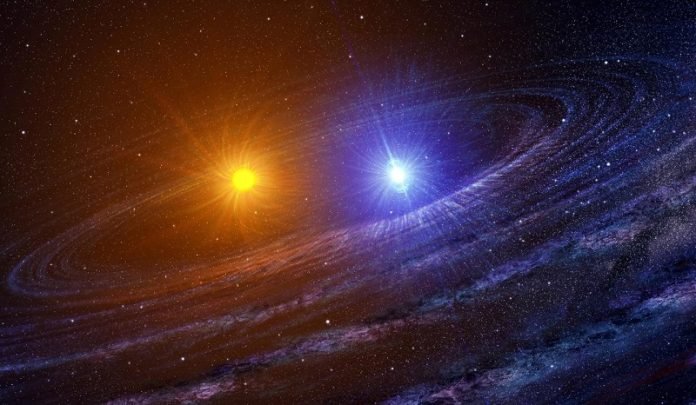
In the constellation of Orion, there is a brilliant bluish-white star. It marks the right foot of the starry hunter.
It’s known as Rigel, and it is the most famous example of a blue supergiant star. Blue supergiants are more than 10,000 times brighter than the Sun, with masses 16 – 40 times greater.
They are unstable and short-lived, so they should be rare in the galaxy.
While they are rare, blue supergiants aren’t as rare as we would expect. A new study may have figured out why.
We aren’t entirely sure how these massive stars form, though one idea is that they occur when a massive main sequence star passes through an interstellar cloud.
By capturing gas and dust from the cloud, a star can shift off the main sequence to become a blue supergiant.
Another idea is that they may form within stellar nurseries with a mass as great as 300 Suns. As a result, they quickly burn so brightly that they never become true main-sequence stars.
Both of these models predict that blue supergiants are much more rare than the number we observe.
This new study starts by noting that blue supergiants, particularly the smaller ones known as B-type supergiants, are rarely seen with companion stars.
This is odd since most massive stars form as part of a binary or multiple system.
The authors propose that B-type blue supergiants aren’t often in binary systems because they typically are the product of binary mergers.
The team simulated a range of models where a giant main-sequence star has a smaller close-orbiting companion and then looked at what would result if the two stars merged. They then compared the results to observations of 59 young blue supergiant stars in the Large Magellanic Cloud.
They found that not only can these mergers produce blue supergiants in the mass range of the Magellanic stars, but the spectra of the simulated mergers match the spectra of the 59 blue supergiants.
This strongly suggests that many if not most B-type blue supergiants are the result of stellar mergers.
In the future, the team would like to carry this work further to see how blue supergiants evolve into neutron stars and black holes.
This could help explain the type of mergers observed by gravitational wave observatories such as LIGO and Virgo.
Written by Brian Koberlein/Universe Today.



